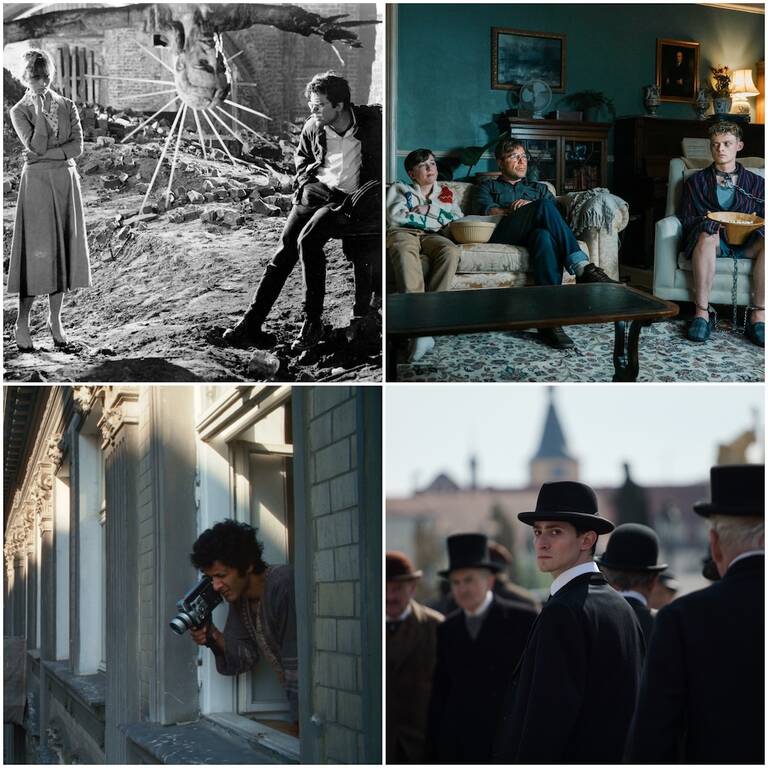Dir. Samantha Fuller, US, 2013, 80 mins
Cast: (as themselves) James Franco, William Friedkin, Tim Roth
Words spoken in the piece are either narrated directly from his book or are his own words from the archives. The idea came to pass when Samantha found over 100 unlabelled film reels in her father’s shack, much of which was shot by Fuller, during the soldier-come- reluctant war reporter period of his life. A Fuller Life paints a vividly detailed picture of his life and times, as described by Fuller in his own uniquely pithy style. However, chronology is king and the quasi-autobiographical angle to the storytelling obscures any comparable detailed exploration of the polymath artistic facets of Samuel Fuller.
The story opens in the office where Sam Fuller did much of his best work. The shelves are stuffed to the ceiling with labelled film scripts, the walls are decorated with myriad posters and globes; maps and objects that in anyone else’s studio would look affected and pretentious. Here, Samantha herself relates a generic prologue as we tour this treasure trove of creativity and she explains why you are about to see what you are about to see. There are then 12 ‘chapters’ which divide her father’s life, read, among others, by James Franco, Mark Hamill and William Friedkin. Samantha describes the process as “like holding a 2-year-long séance, trying to channel my father’s spirit into the film. I don’t know how the Coppola or Cassavetes kids feel when they do their movies, but I could hear my father’s voice when I was working, saying “Speed it up!” and “Emotion!””
Many of the chapters do not lack emotion, as she feared they might. However, this is largely due to the breadth of her father’s cinematic opus. There is a scene for every situation, as much of Fuller’s original work was drawn from personal experience. The astute use of his catalogue is the ideal vehicle to convey his thoughts as a daughter seeks to plot her father’s personal and professional development.
Satirical cartoons are an alternative insight into the director of White Dog’s mind. While at war he would send cartoons home to his mother. They weren’t seen as being sensitive to the war effort and they also provided true details of life on the lines. Despite everything during his wartime experience, Sam still hankered for his habitual cigar. When Marlene Dietrich entertained the troops, he fought his way to her dressing room, not to ask for a kiss or for an autograph, but to secure cigarettes from their mutual agent. Sam later spotted Marlene post-war and although she did not immediately recognise him, when she learned who he was she began to cry. These vignettes from his real life, as opposed to his surrogate self as depicted by his own films, give an insight into the kind of man he really was.
This pseudo-auto-docu-bio-pic is a strange hybrid. Fuller was obviously prolific as an artist, photographer, journalist, screenwriter and director. Who better to explain how this came to pass than the man himself? In an added demonstration of his ability to write dialogue, it is his description of his own life that is the glue that binds the movie. The illustrious contributors are useful in that they pin different voices and dispositions to each stage of Sam’s life and such a cast also adds a layer of testament simply by assisting his daughter in paying homage to her father. They do not add much else though. The Royal typewriter, a massive collection of books, screenplays, treatments and war memorabilia in ‘The Shack’ are supporting evidence to Fuller’s having been there, devoted and immersed in his art. As these objects mark a man’s personal sanctum, so the sense that these well-wishers have been handed a script and been asked to sit in this ‘office’ to provide ornamentation is heightened. It is an informative, educational and witty representation of a filmmaker who purposely sought to tell his own stories rather than seek the limelight and budgets of the major studios.
The closing American vitriol of meritocracy and hard work sticks a little in the throat as the credits role. Let’s just hope that it was true to the man and not to justify the punning title suggesting a life carpe-d to the diem.
Review by George Meixner
[SRA value=”3″ type=”YN”]







